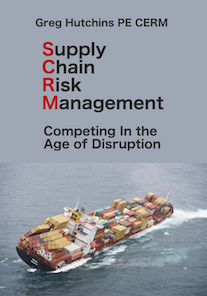 For the last few months, I’ve been giving talks on the trade war between US and China. A few of these talks have been in the US. Others were skyped to China.
For the last few months, I’ve been giving talks on the trade war between US and China. A few of these talks have been in the US. Others were skyped to China.
The bottom line is that trade between the US and China has been weaponized.
The Wall Street Journal on December 13, 2018 distilled the challenge:
“… it is questionable whether fragile globalized supply chains can thrive at all in an environment where the world’s two largest economies are disinclines to play by the rules, even their own.”
Our response is that risk (threats and opportunities) is the new lens by which end product manufacturers (brand owners) will have to view China off shoring, on shoring, and sourcing in general.
ARE GROWING TRADE THREATS REAL?
Four months ago, we would have said that US – China trade issues were differences that were largely negotiable. Both sides were talking, positioning, posturing, and negotiating.
Now, we believe there is a fundamental shift in sourcing perceptions, context, and points of view between US and China.
In this piece, we’ll look at a few sourcing perceptions and realities.
In the recent past, US and China were largely collaborating. If there were differences in trade perceptions and realities, these differences could be discussed, negotiated, or even papered over in the pursuit of longer term agreements. In other words, both the US and China were on the same side of the negotiating table focusing on mutual interests.
This doesn’t seem the case anymore. Each side is escalating issues such as the arrest of Huawei executive, unilateral tariffs, trading workarounds, and escalating intimidation.
US and China have moved from collaborating on issues to competition and even economic containment. The US and China are looking at technological competition as a proxy for military confrontation and economic competition. Each are following a containment strategy in different sectors.
Trade by both countries is also being reframed as national security issues. The US wants balance of trade. China wants trade stability with continued growth. Both countries risk economic stagnation.
‘MAKE OR BUY’ DECISION
End product manufacturers, the product brand owners, are now challenged because many believe they are now pawns in a bigger game of international geo-politics and geo-economics.
And, these larger issues create new problems and risks for end product manufacturers. These challenges mean revisiting fundamental questions such as ‘make or buy’ products, especially should we continue to source products from China.
The ‘make or buy’ decision is a fundamental business decision by each buyer. This decision was often made ten or more years to source products in China. At that point, the decision was probably based on low price and reliable products.
Now, these same companies are re-evaluating the ‘buy’ decision because China poses more overall risks. Some of the risks include: tariffs, higher product costs, political retaliation, and late deliveries.
And, more importantly, the overall value in the decision to source in China is now balanced against these risks. More companies now have to look at the fundamental China sourcing decision and decide to make the product or source it in another country in Asia or even find a domestic source. Huge issues with no easy answers.
Over the next few pieces, we’ll look at a few risk issues confront end product manufacturers and brand owners.
Greg Hutchins is the author of Supply Chain Risk Management.
Greg Hutchins is the founder of:
www.QualityPlusEngineering.com
www.CERMAcademy.coim
www.800Compete.com
www.WorkingIt.com
